LL97 Greenhouse Gas Emissions Reduction
In New York City, over two thirds of greenhouse gas (GHG) emissions come from buildings. Local Law 97 of 2019 as amended (LL97) is one of the most ambitious plans for reducing emissions in the nation.
Under this groundbreaking law, most buildings over 25,000 square feet are required to meet new GHG emissions limits beginning in 2024, with stricter limits coming into effect in 2030.
The goal is to reduce the emissions produced by the City’s largest buildings 40 percent by 2030 and to net zero by 2050.
Fines for Non-Compliance
-
A covered building owner must submit the annual building emissions report. Penalty for noncompliance = (Floor Area x $0.50) per month.
-
A covered building must meet the annual emissions limit for that building. Penalty for non compliance = (Actual Emissions - Emissions Limit) x $268 per year
LL97 Timeline
March 3rd 2025: BEAM Reporting Portal Launch and Start of Extension Requests
General Reporting Period (March 1st 2025 - June 30th 2025)
May 1st 2025: Deadline to Submit Report
Grace Period (May 1st 2025 - June 30th 2025)
June 30th 2025: Deadline to submit without extension or to submit a 60 day extension
Extension Request Period (March 1st 2025 - August 29th 2025)
August 29th 2025: Deadline for submitting compliance reports with extension requests

ReinventNYC Technologies Directly Enable LL97 Compliance
1. Measure and Track Building Emissions
Smart Energy Meters
Provide real-time, circuit-level energy consumption data necessary for calculating emissions.
2. Understand Energy Usage Patterns
Energy Analytics Platforms
Cloud-based platforms analyze historical and real-time data to identify inefficiencies. This helps reduce emissions proactively.
3. Optimize HVAC Efficiency
Smart Thermostats & HVAC Sensors
Sensors for temperature, CO₂, humidity, and occupancy automate HVAC systems, reducing unnecessary heating/cooling, directly lowering emissions.
4. Monitor Occupancy & Space Usage
Occupancy Sensors & Smart Lighting Systems
Reduce lighting & HVAC loads based on real-time space utilization. Prevent energy waste in unoccupied areas.
5. Detect and Manage Equipment Issues Early
Predictive Maintenance Sensors
Prevent energy inefficiencies caused by malfunctioning equipment that may drive up energy use and emissions unexpectedly.
6. Provide Audit-Ready Reporting Data
Building Management System (BMS) Integration
Aggregates and stores emissions-relevant data securely, providing reports that align with LL97 audit expectations.
7. Manage Peak Load and Demand Response
A-VEN Demand Response Virtual End Node
Automatically curtail or shift energy loads during peak periods to avoid high emissions rates associated with dirty grid energy.
8. Support Retro-Commissioning for Older Buildings
Wireless Sensors (Easy Retrofit)
Allows older buildings to install sensors without major construction, ensuring LL97 compliance is achievable without massive CAPEX.
9. Visualize & Communicate Sustainability Progress
IoT Dashboards & Tenant Engagement Screens
Visual tools to communicate progress toward LL97 targets to tenants, owners, and investors—supporting ESG transparency.
Ready to future-proof your office and stay ahead of LL97?
Let’s talk about building an IoT-enabled GRC strategy that works.

